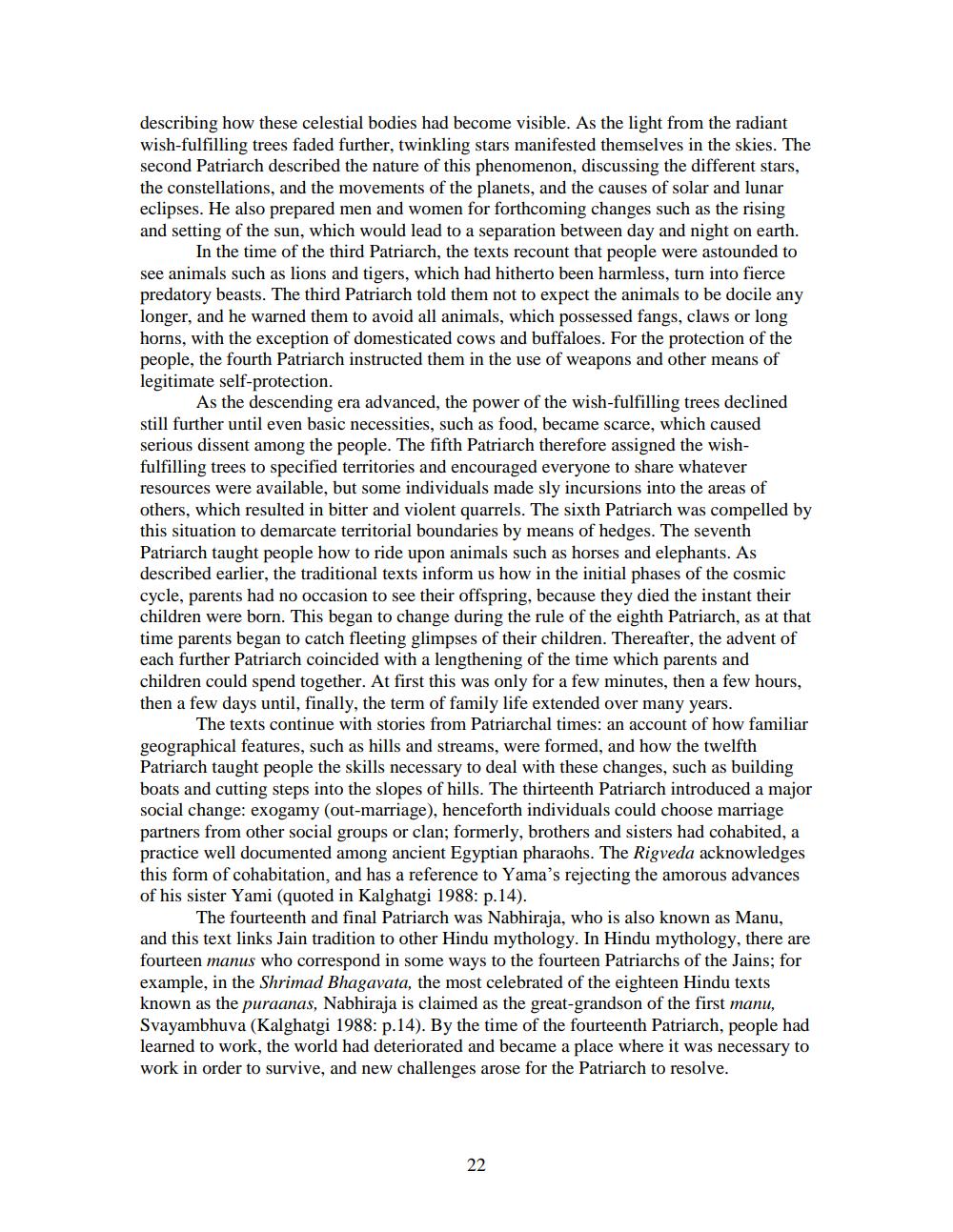________________
describing how these celestial bodies had become visible. As the light from the radiant wish-fulfilling trees faded further, twinkling stars manifested themselves in the skies. The second Patriarch described the nature of this phenomenon, discussing the different stars, the constellations, and the movements of the planets, and the causes of solar and lunar eclipses. He also prepared men and women for forthcoming changes such as the rising and setting of the sun, which would lead to a separation between day and night on earth.
In the time of the third Patriarch, the texts recount that people were astounded to see animals such as lions and tigers, which had hitherto been harmless, turn into fierce predatory beasts. The third Patriarch told them not to expect the animals to be docile any longer, and he warned them to avoid all animals, which possessed fangs, claws or long horns, with the exception of domesticated cows and buffaloes. For the protection of the people, the fourth Patriarch instructed them in the use of weapons and other means of legitimate self-protection.
As the descending era advanced, the power of the wish-fulfilling trees declined still further until even basic necessities, such as food, became scarce, which caused serious dissent among the people. The fifth Patriarch therefore assigned the wishfulfilling trees to specified territories and encouraged everyone to share whatever resources were available, but some individuals made sly incursions into the areas of others, which resulted in bitter and violent quarrels. The sixth Patriarch was compelled by this situation to demarcate territorial boundaries by means of hedges. The seventh Patriarch taught people how to ride upon animals such as horses and elephants. As described earlier, the traditional texts inform us how in the initial phases of the cosmic cycle, parents had no occasion to see their offspring, because they died the instant their children were born. This began to change during the rule of the eighth Patriarch, as at that time parents began to catch fleeting glimpses of their children. Thereafter, the advent of each further Patriarch coincided with a lengthening of the time which parents and children could spend together. At first this was only for a few minutes, then a few hours, then a few days until, finally, the term of family life extended over many years.
The texts continue with stories from Patriarchal times: an account of how familiar geographical features, such as hills and streams, were formed, and how the twelfth Patriarch taught people the skills necessary to deal with these changes, such as building boats and cutting steps into the slopes of hills. The thirteenth Patriarch introduced a major social change: exogamy (out-marriage), henceforth individuals could choose marriage partners from other social groups or clan; formerly, brothers and sisters had cohabited, a practice well documented among ancient Egyptian pharaohs. The Rigveda acknowledges this form of cohabitation, and has a reference to Yama's rejecting the amorous advances of his sister Yami (quoted in Kalghatgi 1988: p.14).
The fourteenth and final Patriarch was Nabhiraja, who is also known as Manu, and this text links Jain tradition to other Hindu mythology. In Hindu mythology, there are fourteen manus who correspond in some ways to the fourteen Patriarchs of the Jains; for example, in the Shrimad Bhagavata, the most celebrated of the eighteen Hindu texts known as the puraanas, Nabhiraja is claimed as the great-grandson of the first manu, Svayambhuva (Kalghatgi 1988: p.14). By the time of the fourteenth Patriarch, people had learned to work, the world had deteriorated and became a place where it was necessary to work in order to survive, and new challenges arose for the Patriarch to resolve.




